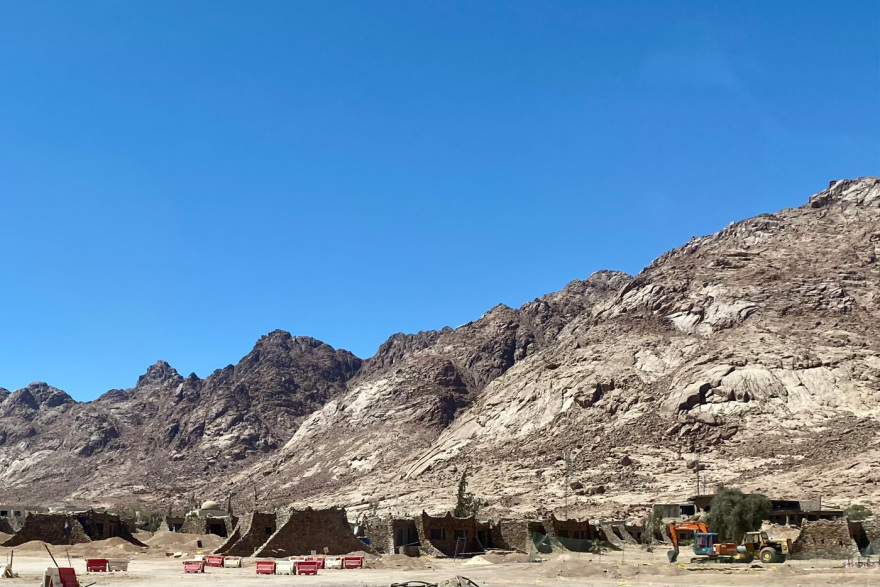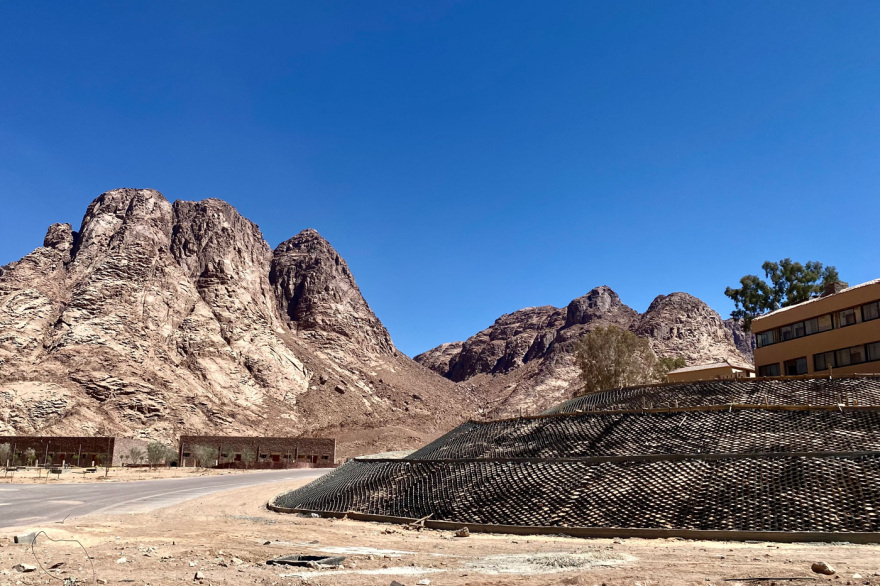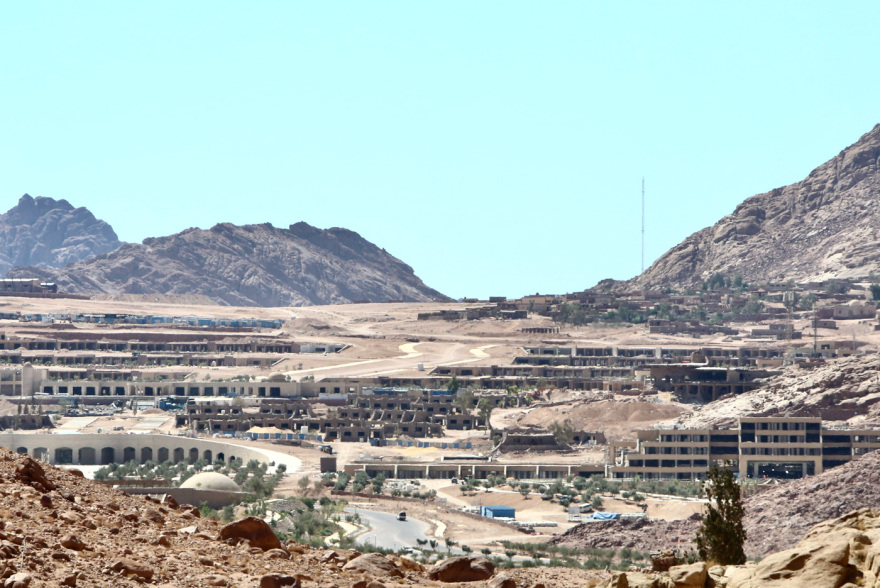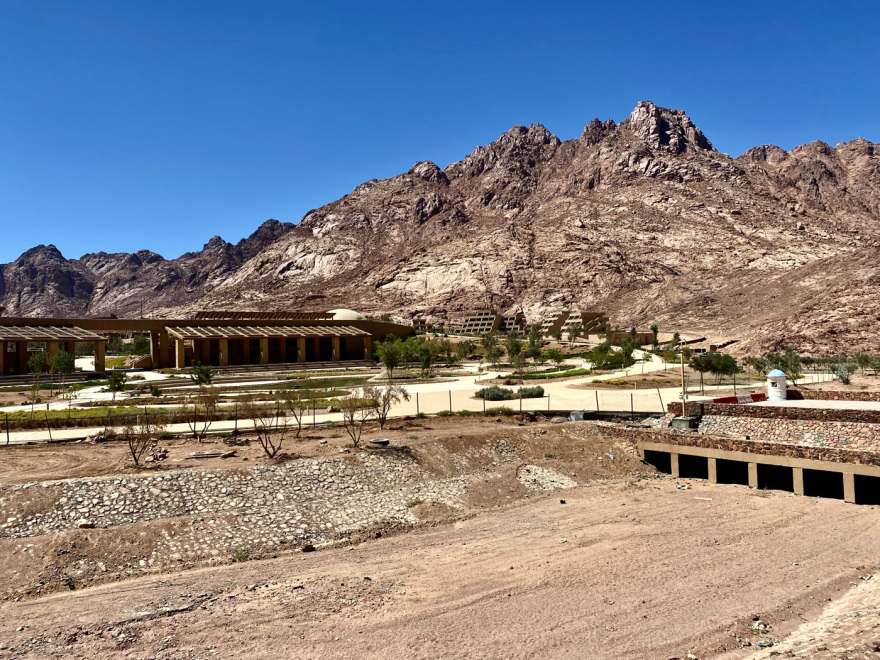Descending the asymmetrical road with the turns leading out of the perimeter of Monastery of St. Catherinethe image that spreads in front of you is almost unreal: In the sun -burning valley, a breath away from the sacred place, a colossal tourist project has already begun to unfold.
We wandered in the wider area for a while, climbed slopes, went through unfinished building complexes, and saw with our eyes the full extent of a plan that looks nothing like its wild, ascetic beauty Sinai. In front of us, hotels fifth at an advanced stage of erection, luxurious villas overlooking the monastery, a high quality conference center and dozens of workplaces working feverishly.
The project bears the name “Great Transfiguration” and aspires to turn Sinai into an international intellectual, cultural and conference tourism destination. The total investment reaches $ 320 million, with the aim of – as the relevant bodies say – attracting up to 30 million tourists by 2028, which, as they say, will bring enormous financial benefits to the Egypt.
They themselves argue that the projects are fully harmonized with UNESCO standards, as the area has been designated a World Heritage Site since 2002.
However, there are few – and first of all the Egyptian media – those who believe that the recent judicial decision to confiscate real estate of the monastery is not at all irrelevant to this construction rise.
Indeed, they point out the timing of the decision with the beginning of the “great transformation”, implying that this development would serve the interests of specific economic circles immediately.



It is no secret, after all, that for some real estate and tourism planning, a “conversion” of the monastery from an active monastic center into a museum religious pole of traffic would be extremely convenient. A monastery without monks, but with millions of tourists crossing its gates every day, bringing revenue and worldwide promotion.


At the moment, nothing proves that the monastery is officially integrated into the plans of the tourist “transformation”. However, the proximity of the new infrastructure, the scale of intervention and the timing of the court ruling leave many questions open.
And it is probably a matter of time to see if this historical monastery, which has been standing for 1,500 years at the crossroads of religions and peoples, remains intact or will become part of a tourist map designed away from its cells and prayers.
